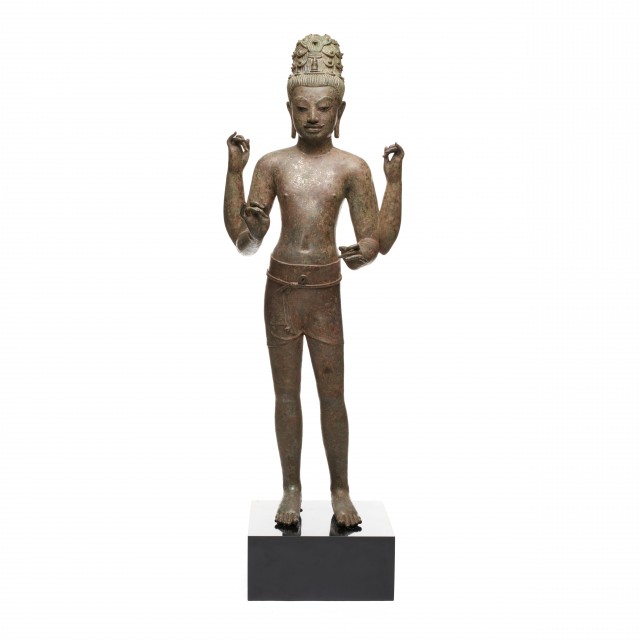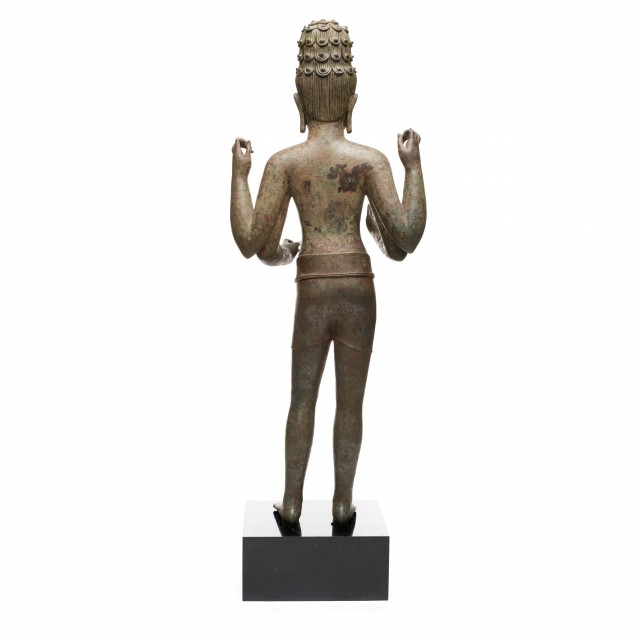
Bodhisattva Maitreya

Photography by Synthescape, Digital image © Asia Society

Photography by Synthescape, Digital image © Asia Society
Bodhisattva Maitreya
8th century
Thailand, Buriram province, Prasat Hin Khao Plai Bat II
Copper alloy with inlays of silver and black stone
H. 38 x W. 14 1/4 x D. 10 3/4 in. (96.5 x 36.2 x 27.3 cm)
Asia Society, New York: Mr. and Mrs. John D. Rockefeller 3rd Collection, 1979.63
Provenance
John D. Rockefeller 3rd, New York, NY; acquired from Spink & Son Ltd., London, 1966.
The Asia Society, New York, NY, bequest of John D. Rockefeller 3rd, New York, NY, 1979.
Licensing inquiries
This exquisitely cast image of the Bodhisattva Maitreya is widely acknowledged to be one of the finest sculptures from a group of bronzes unearthed in a ruined temple in 1964 in northeast Thailand. The sculpture can be identified as Maitreya by the presence of a small stupa (a Buddhist reliquary, regarded as the body of the Buddha) in his headdress. It is likely that his hands once held further identifying attributes. Maitreya, whose Sanskrit name means "benevolent" or "friendly," is unique in Buddhism as he is worshipped both as a bodhisattva of the present eon and as the Buddha of the next era. The scanty clothing, long matted hair, and lack of jewelry indicate that this image represents Maitreya as a bodhisattva-ascetic, a type found throughout South and Southeast Asia from the 7th through the 9th centuries.



